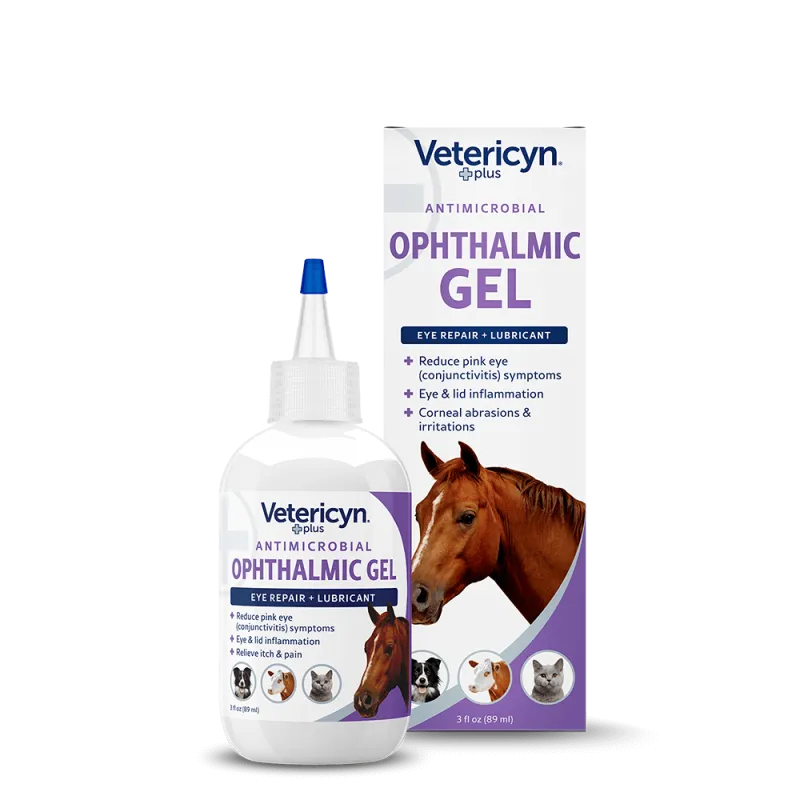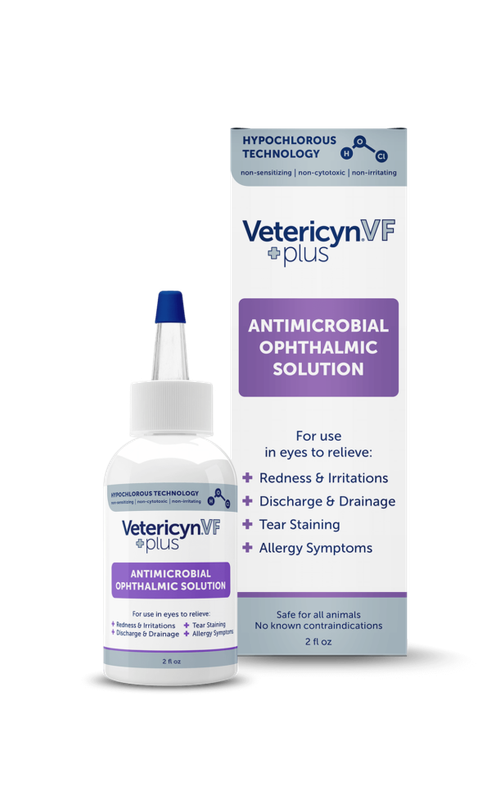
If reading that sounded your pet parent alarm, don’t worry. Understanding the main causes of pinkeye can help you get a hold on (and in some cases, prevent) this condition.
INFECTIOUS CONJUNCTIVITIS
Thankfully, the odds of your dog contracting a case of infectious conjunctivitis are relatively low. This type of disease is considered rare in dogs. However, infectious conjunctivitis can be serious, and in some cases, contagious (pinkeye is not what you want your pup to bring home from the dog park). There are two main types of this disease:
- Viral – Just like in humans, pinkeye in dogs can be caused by a virus. Viral respiratory infections may be the underlying cause of this eye condition since they can cause dog eye discharge. Viral conjunctivitis can also be caused by a more serious (and highly contagious) illness called canine distemper virus (there’s a vaccine for this one—thank you science).
- Bacterial – Nasty microbes are to blame for this type of eye problem, too. Bacterial conjunctivitis is contagious, so if you’re worried about it spreading, don’t let your dog share water bowls or bedding, and try to get them to practice canine social distancing.
NON-INFECTIOUS CONJUNCTIVITIS
Unfortunately, germs are not the only thing you need to worry about to keep your dog’s eyes big and beautiful. Unfortunately, non-infectious conjunctivitis is much more common, and is caused by factors like:
- Allergens – You know how allergies can make you feel like you want to itch your eyes out? Well, your dog’s eyes can be just as sensitive. Dust, pollen, dander, mold, and fragrances are all on the list of potential allergens that can contribute to pinkeye symptoms in dogs.
- Irritation or Injury – If your pup’s favorite trick is to roll around in the dirt—and then on your freshly vacuumed carpet—they might be putting themselves at risk for pinkeye, since rubbing or scratching the eye can lead to this condition.
Key Indicators of Pinkeye
Now that you’ve brushed up on your canine ophthalmology (or more realistically, learned that this field existed), it’s time to take a look at the most common pinkeye symptoms in dogs, as well as what to do if your dog’s eyes begin saying more than just ‘play with me’.
CLINICAL SIGNS AND SYMPTOMS
Your dog’s eyes should be the key to unlocking an extra treat or belly rub, but they shouldn’t show signs like:
- Redness
- Bloodshot appearance
- Puffiness around the eyelid
- Crustiness or dry eye
- Eyelids that are stuck together
- Excessive watery eye, contributing to dog tear stains
- Squinting
- Abnormal blinking
- Pawing at the eyes
WHAT TO DO
If you notice your dog’s eye(s) exhibiting any of the symptoms above, take him to the vet. Most cases of pinkeye can be cleared up with the right treatment, but you don’t want to risk letting the eye condition worsen, allowing complications to arise, or letting underlying health conditions go untreated. Your vet knows best when it comes to addressing an eye disease!
Treatment Options
Treatment options vary depending on what’s causing the infection, and can include:
- Antibiotic eye drops or ointment
- Steroid eye drops
- Antihistamines
- Artificial tears
- Cold compresses
- Cleaning regimens that remove discharge or crust
- Over-the-counter treatments like Vetericyn antimicrobial eye wash or ophthalmic gel
- Extra love and treats from their owners in addition to the above
If you ever had a pinkeye infection, you’ll remember that having someone put medicine in your eyes isn’t fun, and your dog probably doesn’t feel any differently. Keep them as relaxed as possible when administering any treatment, and be sure to let them know what a good boy or girl they are.
Keep Them Bright-Eyed and Bushy Tailed
You adore your dog’s puppy eyes, but even the most convincing set of peepers can run into issues from time to time, whether it be due to an eye injury, allergy, virus, type of bacteria, or other underlying cause. Whether it’s your husky’s baby blues or your pug’s bug-like beauties, keep an eye on your dog’s eyes—they’ll stay bright-eyed and bushy tailed.
For extra support, consider Vetericyn as your line of puppy wellness products for everything from shampoos to eye care to supplements.
FAQs
[tab name='What are the steps for dealing with conjunctivitis?']
In the case of conjunctivitis, also known as pink eye, it's important to keep your dog's eyes clean and comfortable. Use a soft, damp cloth to remove any discharge. Vetericyn® Plus Eye Care can assist in cleaning and caring for the eyes. Always consult a vet if symptoms persist.
[tab name='Can a dog's eye infection heal on its own?']
While some mild eye infections in dogs can resolve on their own, it's always advisable to consult a vet. An untreated eye infection can lead to more serious problems, including loss of vision.
[tab name='What is the approach for inflamed eyes in a dog?']
For inflamed eyes in a dog, start by gently cleaning the eyes with a soft cloth. Use a vet-approved eye care product like Vetericyn® Plus Eye Care. If symptoms persist, consult a vet.
[tab name='How does conjunctivitis occur?']
Conjunctivitis, or pink eye, can occur due to various factors such as allergies, bacterial or viral infections, or physical irritation from dust or foreign objects. Regular eye care with products like Vetericyn® Plus Eye Care can help reduce the risk of conjunctivitis.
Sources:
- American College of Veterinary Ophthalmologists. Home. https://www.acvo.org/
- NPR. Scientists Explain Puppy Dog Eyes. https://www.npr.org/2019/06/18/733615938/scientists-explain-puppy-dog-eyes
- ASPCA. Can Dogs Get Pink Eye?. https://www.aspcapetinsurance.com/resources/can-dogs-get-pink-eye/
- Ohio State University College of Veterinary Medicine. Canine Distemper Fact Sheet. https://vet.osu.edu/sites/vet.osu.edu/files/documents/preventive-medicine/Canine%20Distemper%20Fact%20Sheet.pdf
- Fetch by WebMD. Conjunctivitis in Dogs. https://pets.webmd.com/dogs/conjunctivitis-dogs
- Hills. Caring for Dogs with Conjunctivitis. https://www.hillspet.com/dog-care/healthcare/conjunctivitis-and-pink-eye-in-dogs




